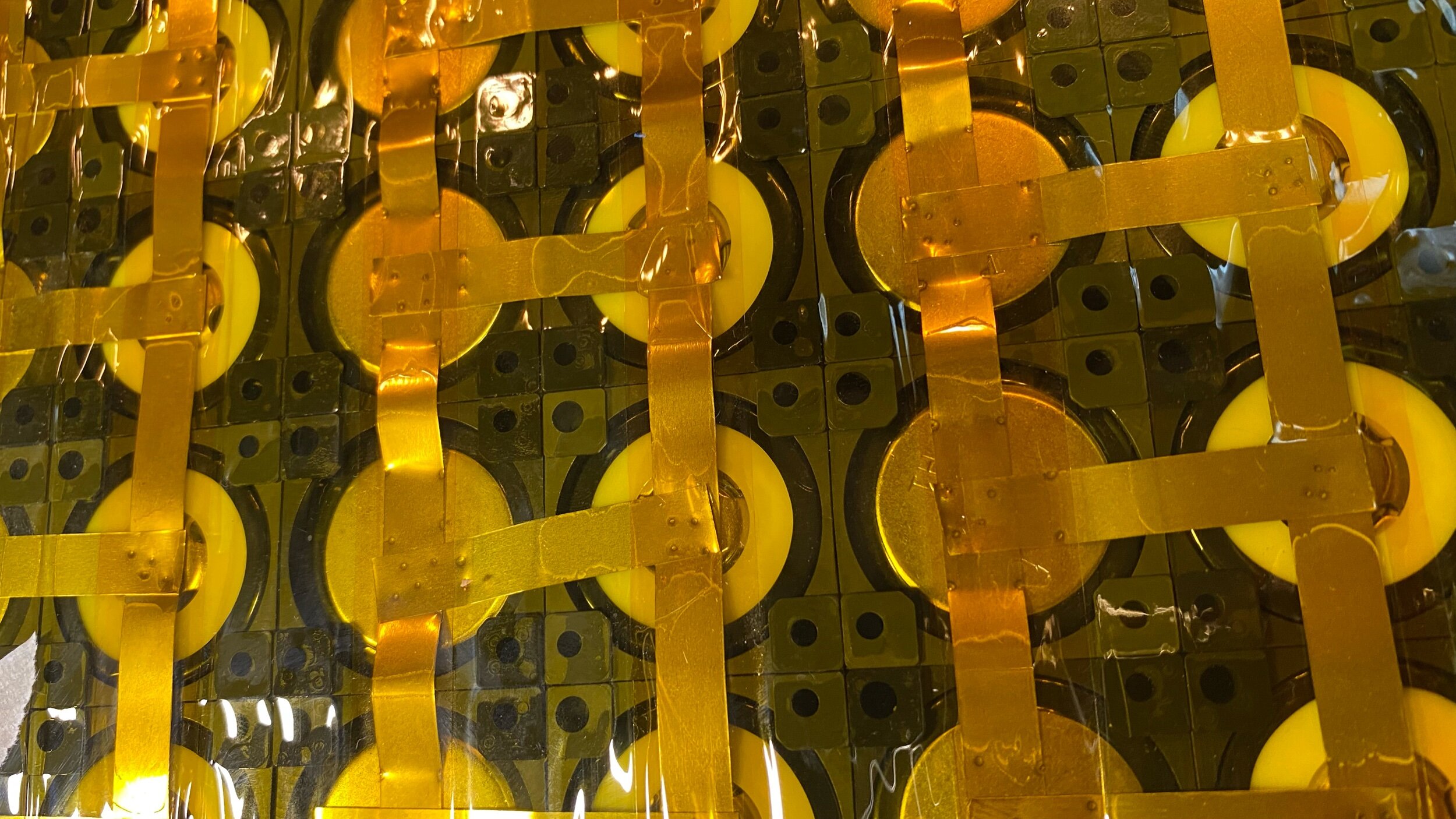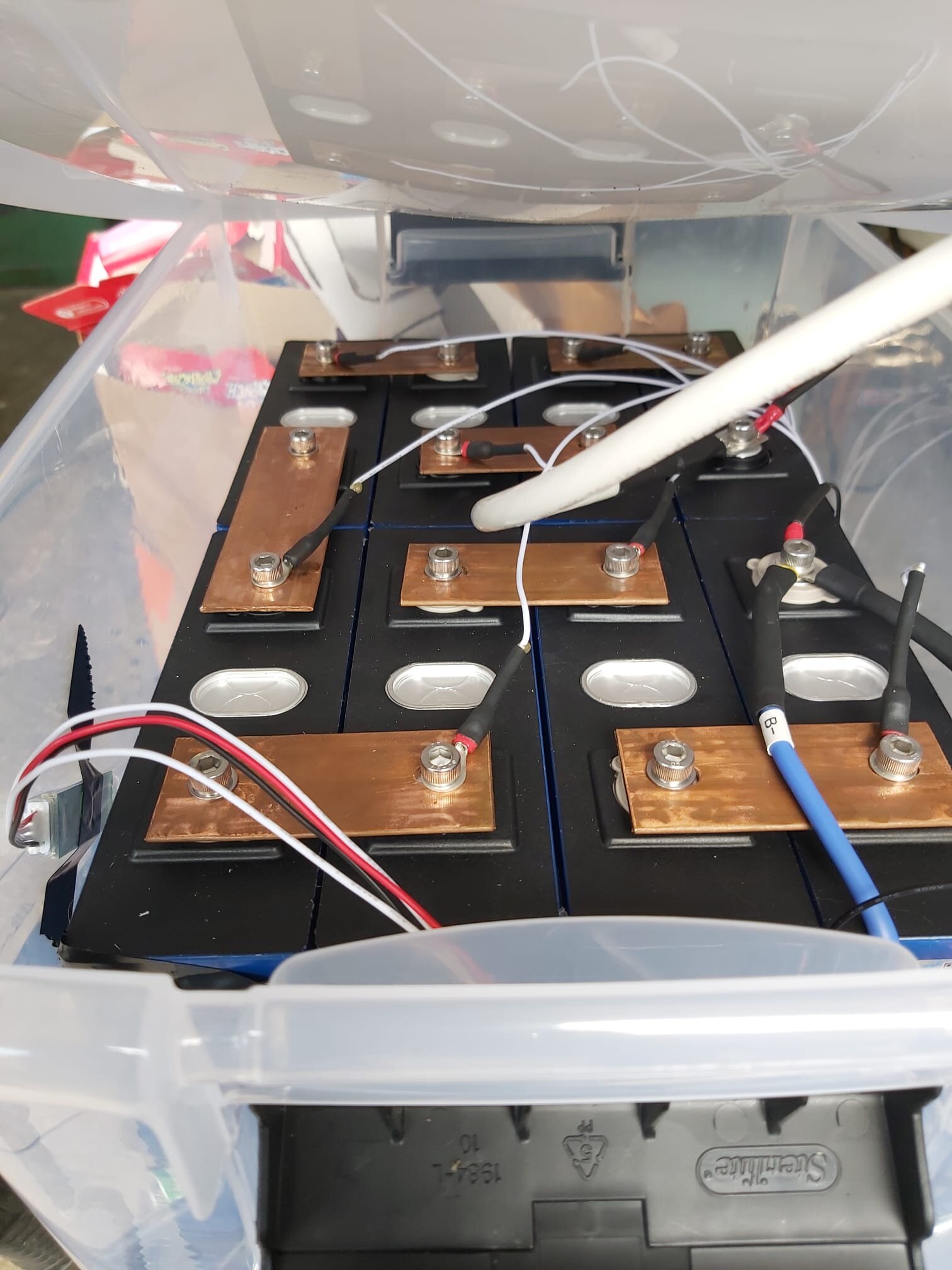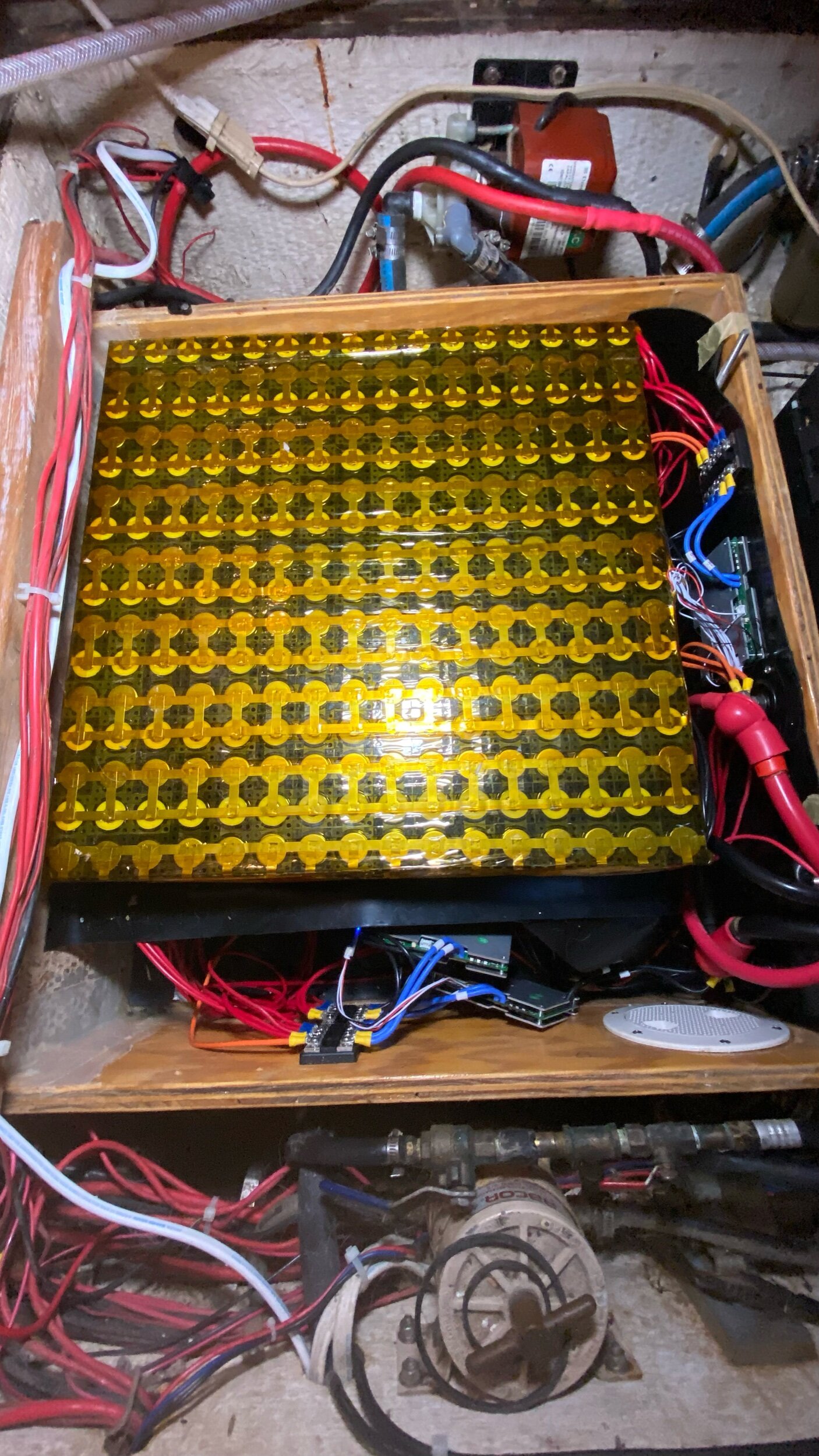Every time you see fancy electronics, they seem to be covered in a strange golden colored tape. What is it and why should you use it?
The short answer is: It is called Kapton Tape and you should cover all electrical connections with it.
Kapton tape helps to insulate the connections. This prevents accidental short circuits and shocks if something accidentally bumps into the battery! Kapton tape also helps hold everything together, keeping the entire unit sealed up as a neat and clean package.
Kapton tape is also really handy for controlling all the crazy amounts of wires that run around the battery pack for the BMS. A BMS will have one additional wire beyond the number of series connections you are using. For example, if you have a 12v battery, it will have 4 series connections and the BMS will have 5 wires. If you have a 24v battery, you will have 8 series connections and the BMS will have 9 wires. If you build a 48v battery like we did, you will have 16 series connections and the BMS will have 17 wires!
I have found that 2 inch wide tape works great giving you a good amount of coverage while still being easy to manage. The two inch wide tape also fits neatly between the cell holders allowing me to wrap the entire outer edge of the cells in Kapton tape to hold any wires or leads in place, as well as provide an extra protection to the sides of the cells.
Keeping all these wires neatly held together and safely contained inside the battery prevents them from getting snagged on something during transport or when the boat heels over and something shifts position to fall against the battery! Holding everything neatly together inside an electrically insulated pouch helps keep the battery safe for a long service life.





















